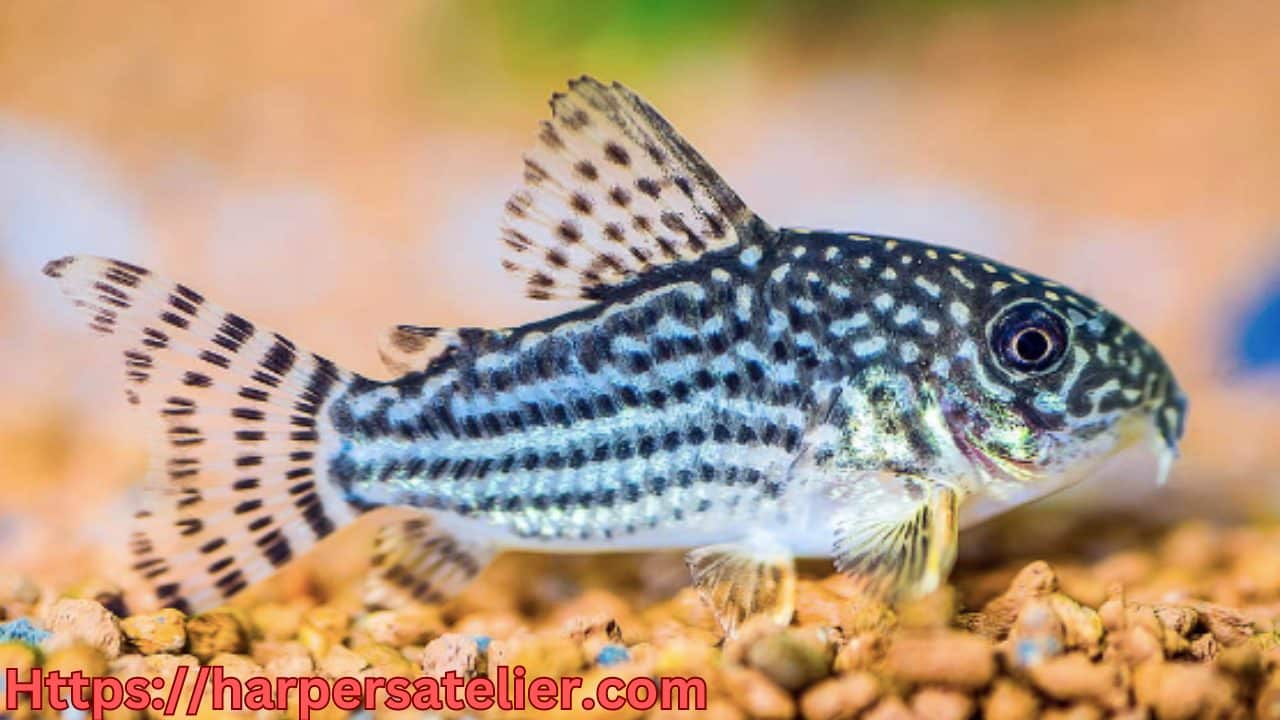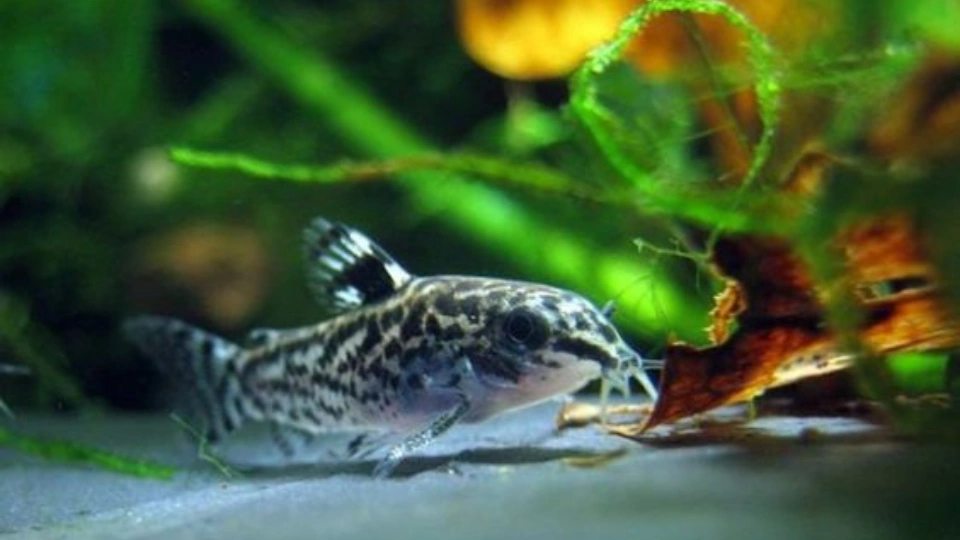Last Updated on February 10, 2024 by Aftab Tariq
Cory catfish types are popular with people who like to keep aquariums because they are calm and have a unique look. The bronze cory, the albino Cory catfish, and the peppered cory are all popular types. These catfish are also known for picking up trash in their tanks, which helps keep the water clean. Because they are simple to care for, get along with other fish, and can help clean up leftover food and debris, they are common tank fish.
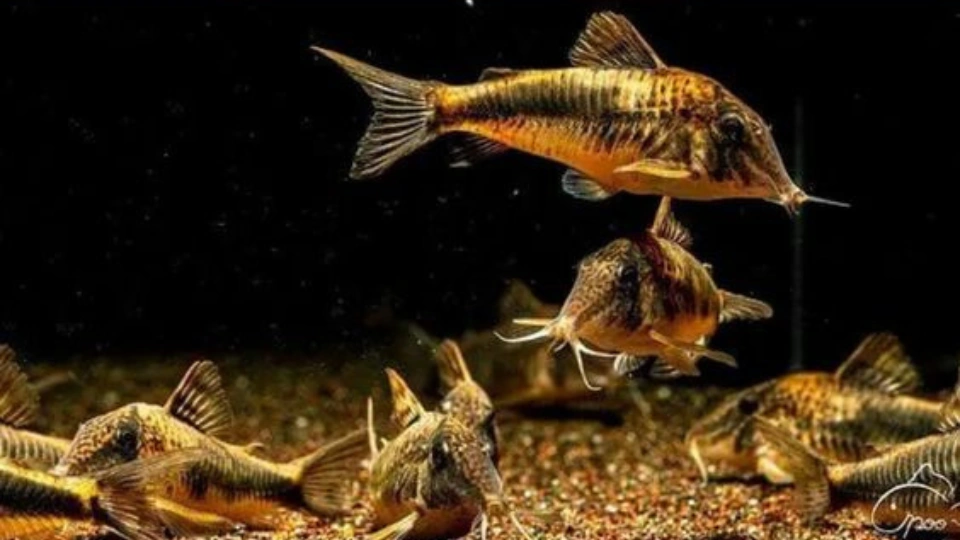
The popular bronze corydoras, albino corydoras, and peppered corydoras are among the more than 160 recognized varieties of cory catfish. Spotted, speckled, and metallic varieties of these fish can be found in the wild. They are excellent tank mates for other fish and invertebrates that aren’t aggressive. Cory catfish live on the bottom and forage for sustenance amongst decaying matter. Here you can get all information about cory catfish types.
Types of Corydoras with Pictures

Cory Catfish Specise list
Here is the list of cory catfish types names:
- Pepper Cory
- Bronze Cory
- Julii Cory
- Bandit Cory
- Three Stripe Cory
- Panda Cory
1: Pepper Cory
Scientific name: Corydoras paleatus
Adult size: Males–2.5 inches (6.5 cm), Females–3 inches (7.5 cm)
Lifespan: 5 years
Temperature: 72–78 degrees F (22–26 degrees C)
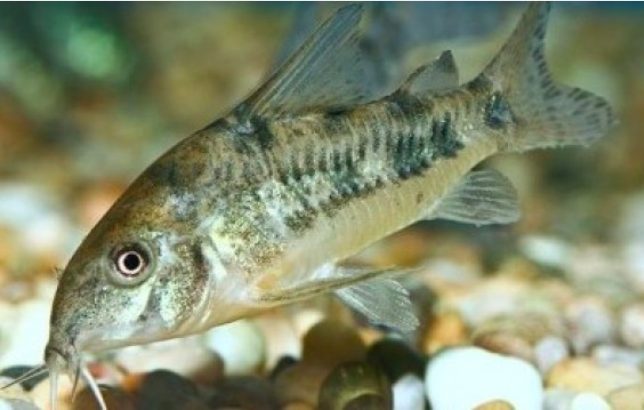
When considering Cory catfish tank mates, it’s essential to select species that complement the peaceful nature of Corydoras paleatus, such as small, non-aggressive fish like neon tetras, ember tetras, or guppies. Avoid larger or more aggressive tank mates that might intimidate or outcompete the Corydoras for food and space.
Additionally, bottom-dwelling species like dwarf shrimp or small snails can also make suitable companions for Cory catfish, as they occupy different ecological niches within the aquarium. Overall, choosing compatible tank mates will help create a harmonious and thriving aquatic community.
2: Bronze Cory:
Scientific name: Corydoras aeneus
Adult size: 2.5 inches (6 cm)
Lifespan: 5 years
Temperature: 72–79 degrees F (22–26 degrees C)
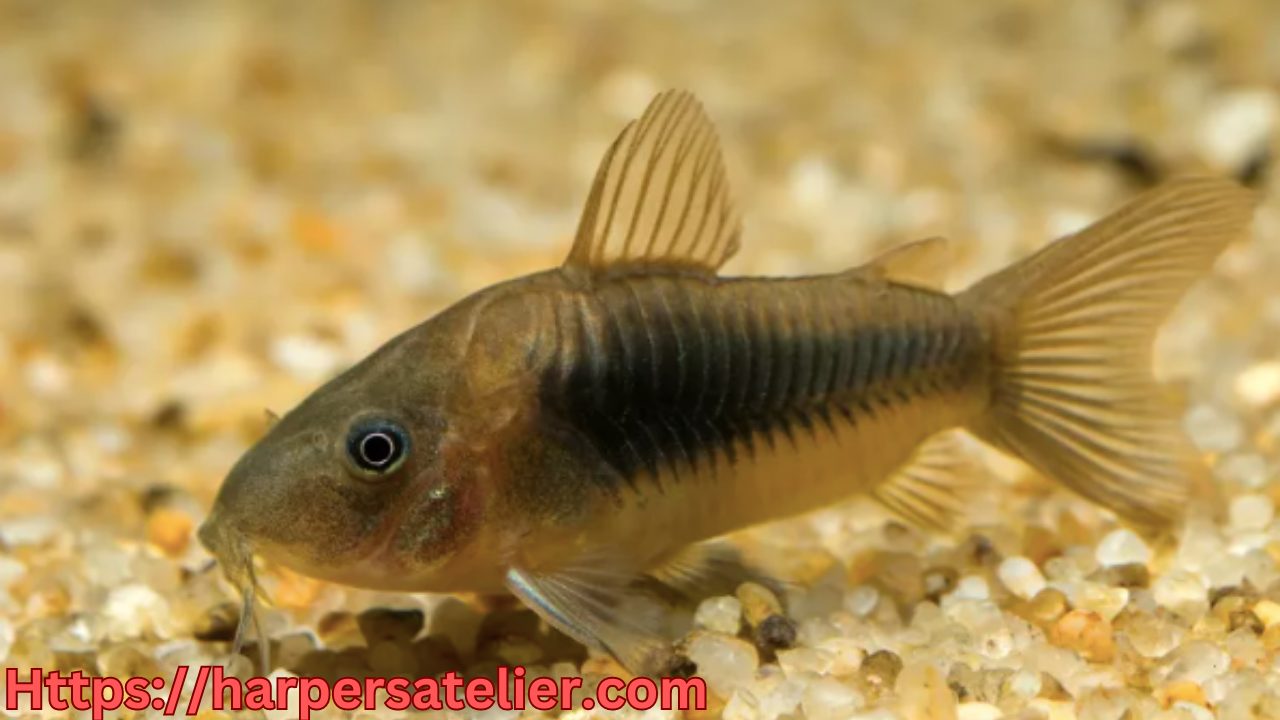
Corydoras aeneus comes from the mythical hero Aeneas. The average healthy life for one of these creatures is 5 years. The smallest capacity tank they sell is 10 gallons.
Their recommended temperature range is between 72 and 79 degrees Fahrenheit, and their pH range is from 5.8 to 7.0. Bronze Corys, like Pepper Corys, are extremely popular and can be obtained quickly anywhere. Most people who keep Corys do so with one of two species. Green, gold, white, and black some color options include Corys. They do well in many situations but should be in classes.
3: Julii Cory:
Scientific name: Corydoras julii
Adult size: 2.5 inches (6 cm)
Lifespan: 5+ years
Temperature: 73–79 degrees F (23–26 degrees C)
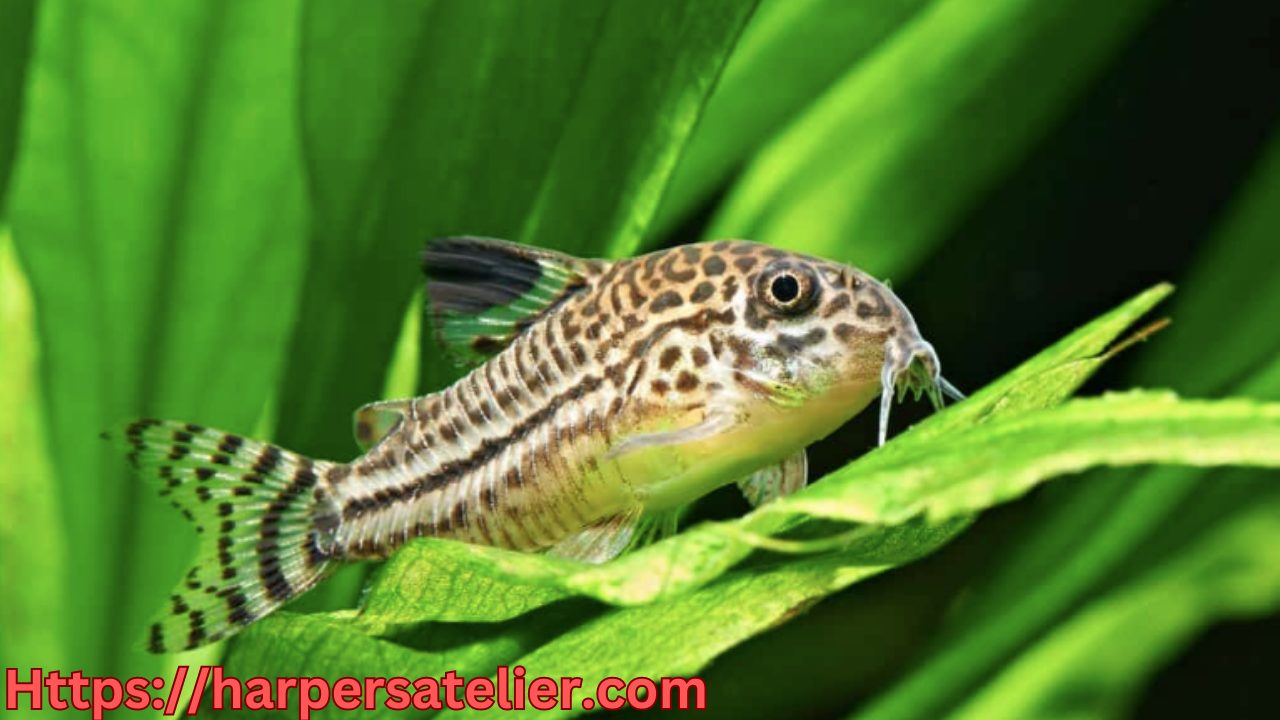
When exploring Cory catfish varieties, the Julii cory catfish stands out as a common choice among freshwater aquarium enthusiasts. Recognizable for its petite stature and serene disposition, this species resembles the peppered cory catfish with its silver hue adorned with distinctive black spots.
However, upon closer examination, one can appreciate the Julii cory’s more intricate and pronounced pattern. With a maximum length of around 2 inches, this diminutive fish is well-suited to tanks of various sizes.
Given its sociable nature, the Julii cory thrives in the company of its own kind, preferring groups of at least three individuals. As a bottom-dweller, it engages in foraging behavior by delicately sifting through sediment, making a substrate of sand or fine gravel an optimal choice for its habitat.
4: Bandit Cory:
Scientific name: Corydoras metae
Adult size: 2 inches (5 cm)
Lifespan: 5 years
Temperature: 72–79 degrees F (22–26 degrees C)
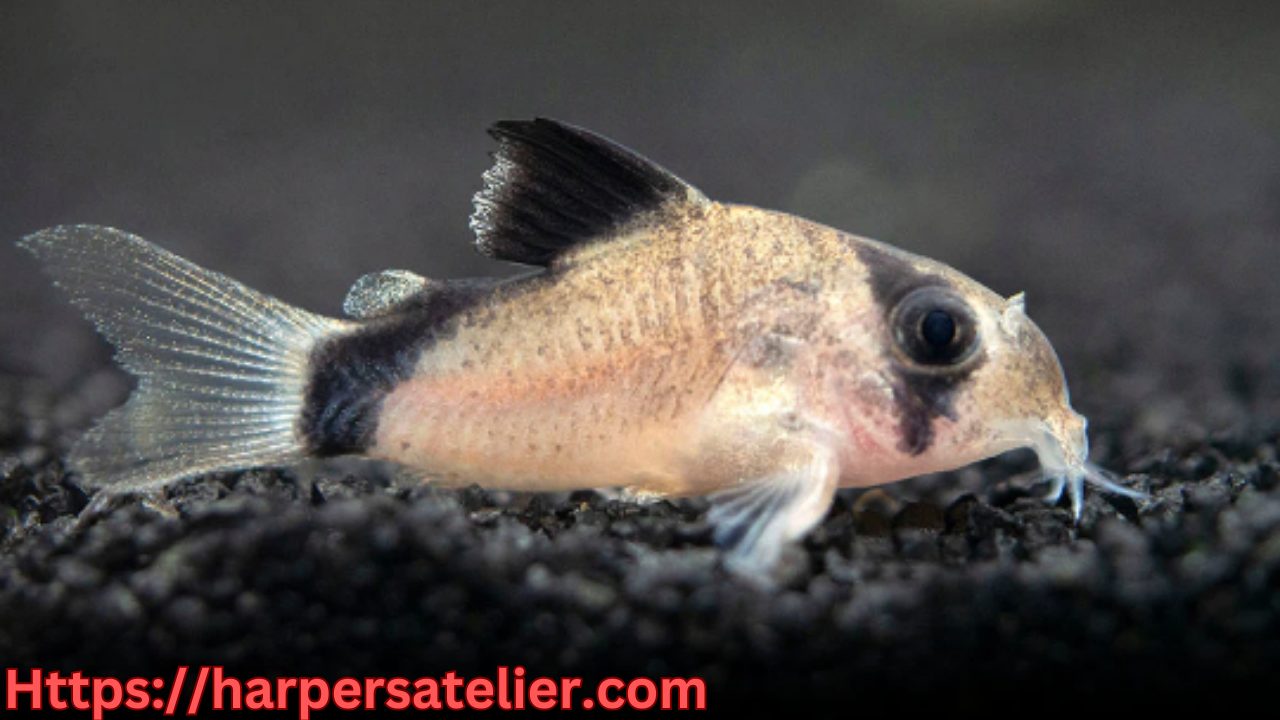
You can identify them as Corydoras Metal. The average healthy life for one of these creatures is 5 years. The smallest capacity tank they sell is 10 gallons. They are peaceful, automated, and educational tank mates. Aquariums have been trading crooked Corys for years. They are one of the family’s more conventional members. The dark covering over their irises makes them nearly unmistakable. Compared to other species, outlaws are more sensitive to fluctuations in water temperature.
5: Three Stripe Cory:
Scientific name: Corydoras trilineatus
Adult size: 2.5 inches (6 cm)
Lifespan: 10 years
Temperature: 72–78 degrees F (22–26 degrees C)
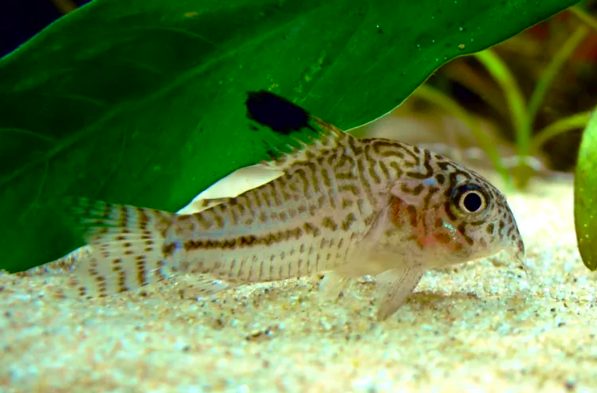
The Three Stripe Cory is a species of pond fish loved by aquarists because of its friendly nature and high socialization levels. Its common moniker comes from the three black stripes that run vertically down each of its silvery sides. The adult Three Stripe Cory only reaches about 2.5 inches, so it’s fine for aquariums of that size or lower.
As a social fish, it does best when housed with at least three other specimens of the same species. The Three Striped Cory is a bottom feeder that prefers sand or fine gravel ground to find prey. The Three Striped Cory is a true omnivore, enjoying algae wafers, pellets, and even lives or chilled brine shrimp and blood worms.
6: Panda Cory:
Scientific name: Corydoras Panda
Adult size: 2 inches (5 cm)
Lifespan: 10+ years
Temperature: 68–77 degrees F (20–25 degrees C)

The Panda Cory is a species of tiny catfish found only in the Amazon River Basin in South America. The cute fish acquired their name because of how their black eye patches look, reminiscent of a panda’s face. Panda Corys are gentle and friendly fish that move and shoal together. They do best in a tank with plenty of plants to provide cover and soft, slightly acidic water. They can be given various sinking pellets, flakes, frozen, and even live foods while in captivity.
Buying Guides for Cory Catfish:
Before buying a cory catfish, ensure a suitable tank environment with clean, well-maintained water, plenty of hiding places, and an appropriate substrate for the fish to flourish in. Here are some specifics to keep in mind:
- Vivacity and acuity:
A cory catfish in good condition will swim around its tank and take an active interest in its environment. It shouldn’t be flopping around at the bottom of the tank, panting for oxygen.
- Seeing clearly and brightly:
Clear, bright, and unclouded irises are desirable qualities in a cory catfish. Water quality issues or an illness of the eye could be the cause of cloudy vision.
- Being asymptomatic:
Look for abnormalities like white spots, discolored areas, or fin injury to determine if the fish is sick. Don’t purchase fish if they exhibit any of these symptoms; they could spread disease to your tank’s inhabitants.
- A balanced diet:
When given sustenance, a healthy cory catfish should be eager to consume it. Ensure the fish seems hungry and isn’t rejecting or spitting out the food you’ve given it.
- Health status:
Make sure the cory catfish is round and juicy without being overstuffed. There shouldn’t be any bumps, sores, or other abnormalities in a fish in good condition.
- Active fins:
Ensure the cory catfish’s fins are healthy and not curled or clamped. The fins should be active, moving smoothly, and not exhibiting any signs of damage or fraying.
- Compatibility:
Think about how the cory catfish will get along with the other species. Although cory catfish are friendly and do their best in schools, they shouldn’t be housed with more dominant fish due to the risk of bullying and injury.
Schooling of the Cory Catfish:
Cory catfish are schooling fish, meaning they are most comfortable in groups of three or more. They prefer to be around others of their kind due to their friendly nature. Keeping them together has additional benefits, including lowering tension and boosting confidence. Cory catfish in schools are fascinating to observe as they school up to find food and perform other natural behaviors. It would help if you gave them a reservoir big enough to support their colony.
Maintenance and Grooming of Cory Catfish:
Information on how to clean and maintain a cory goldfish is provided below.
- Storage Capacity:
Due to their small dimensions, three to five Cory catfish can live happily in a 10-gallon aquarium. They do better in a bigger tank because they do better in groups. Six to eight of them can live happily in a 20-gallon aquarium. More swimming room, which is good for their health, is another benefit of a larger tank.
- Water Quality Indices:
The aquatic conditions in which a cory catfish can thrive are quite variable. Changing the water will help maintain water quality.
- Substrate:
Cory catfish use a fine barbel near their lips to sniff out prey. Sand, smooth gravel or tiny pebbles are all good examples of soft substrates that won’t hurt their barbels.
- Diet:
Cory catfish, like most fish, are omnivores. Sinking grains or wafers are the preferred bait, but live or frozen blood worms, brine shrimp, and daphnia are also popular. Feeding them a balanced diet is important to guarantee their health and well-being.
- Guys in the Tank:
Cory catfish are nonaggressive, so they won’t bother the other fish in your tank. They do best in groups of at least three, so ensure your aquarium is big enough to hold all your fish.
- Grooming:
Grooming is optional for Cory catfish. They don’t need to be groomed or cared for in any particular way, but a clean aquarium and frequent water changes are essential to their health.
Living Area and Conditions:
Habitable Area:
1: Ideally, six or more of these Cory Catfish should be housed together, as they are schooling fish.
2: They need much room on the tank’s floor because they live there.
3: Aquariums with lots of live vegetation are ideal for Cory Catfish.
4: Also necessary are areas for them to conceal themselves, such as caves or buildings.
5: Cory Catfish thrive in conditions similar to their natural habitat, so a substrate of sand or fine gravel is perfect.
Parameters:
1: Cory Catfish prefer 72–78 °F water.
2: Cory catfish prefer pH 6.5–7.5 water.
3: They prefer middle water hardness.
4: The amounts of ammonia, nitrite, and nitrate must be closely monitored, and adequate levels must be maintained.
5: Regular water changes are essential for keeping the fish healthy and sustaining excellent water quality.
How to Care for and Feed a Cory Catfish?
- Cory Catfish consume plant and animal matter in the wild, including insects, crustaceans, and worms.
- They must eat a varied diet that contains both plants and animals.
- Cory Catfish are opportunistic eaters who will eat the tank’s debris but need a balanced diet to stay healthy.
- It’s also crucial to give them nutritious, high-quality food devoid of any harmful additives or bugs.
- Finally, remember to regularly remove any uneaten food from the aquarium to keep the water clean and healthy for the fish.
Average Lifespan of a Cory Catfish:
Compared to other common aquarium fish, the average lifespan of a Cory Catfish is 5–7 years, with some specimens lasting as long as 10 years. A Cory Catfish’s expected lifespan depends on its environment, diet, and tank capacity. Keeping them in a suitable environment, feeding them balanced food, and ensuring they have access to clean water can all add years to their lives.
The Bronze Cory is one of the more robust varieties of Cory Catfish and may live longer than other species when kept in an aquarium. A long and healthy life for your fish requires regular health checks and, if required, veterinary attention. Cory Catfish are popular pets because of their quirky look, friendly nature, and playful demeanor; however, their lifespan is short compared to other aquarium fish.
Is Cory Catfish a Great Pet?
Cory Catfish make fascinating tank inhabitants, but they also make wonderful pets for those searching for an affectionate fishy friend. These tiny, friendly fish are well-known for their interactive and playful nature. Some will even play retrieve, and all of them love attention. In addition, they are great for first-time fish caretakers because of their calm demeanor and low maintenance needs. The Cory Catfish, then, might be the best option for you if you want a companion that is both cute and entertaining.
The Cory catfish priced at about $7 each. So, if you want to get six of them, it would be around $42.
Delightful Cory catfish for sale! They’ll bring peace and beauty to your aquarium.
Conclusion:
Cory catfish types are more timid and modest than others. Aquarists can choose from a wide variety of Cory Catfish species. There’s a huge variety of these intriguing fish, from the common Bronze Cory to the vividly colored Panda Cory and the tiny Pygmy Cory.
The ideal environmental conditions, food, and lifestyle for a given species are all species-specific. While some, like the Julii Cory, are energetic and playful, others, like the Peppered Cory, are shy and prefer to spend their time in caves or hiding among the foliage.
Frequently Asked Question
Need to know More About Cory Catfish Size?
Cory catfish species display a variety of sizes, with none reaching considerable dimensions. Typically, they measure between 2.5 and 12 centimeters in total length, which translates to just under an inch to about 4.75 inches. The majority of Cory catfish are less than 7 centimeters, approximately 2.75 inches long.
What’s the Optimal Cory Catfish Tank Size?
For Cory catfish, a tank size of at least 10 gallons is recommended for a small group, but larger tanks are better for more space. Aim for 20 gallons or more for a larger group or if housing with other fish. Provide hiding spots and soft substrate, and keep up with regular water changes and maintenance.
What are the key Characteristics for Cory Catfish Identification?
Cory catfish are small, peaceful fish known for their bronze-colored bodies with speckles or patches. They have three pairs of barbels around their mouths, and they often sift through substrate for food. They typically have a single dorsal fin and two pectoral fins. They’re sociable and are usually found in groups in aquariums.
Hi, I am Sehrish Kiran a blogger. The main motive to create this Harpersatelier site is that I want to share knowledge about Pets Information, Stories, Pet Breeds, and tips for grooming with all the pet lovers out there.

